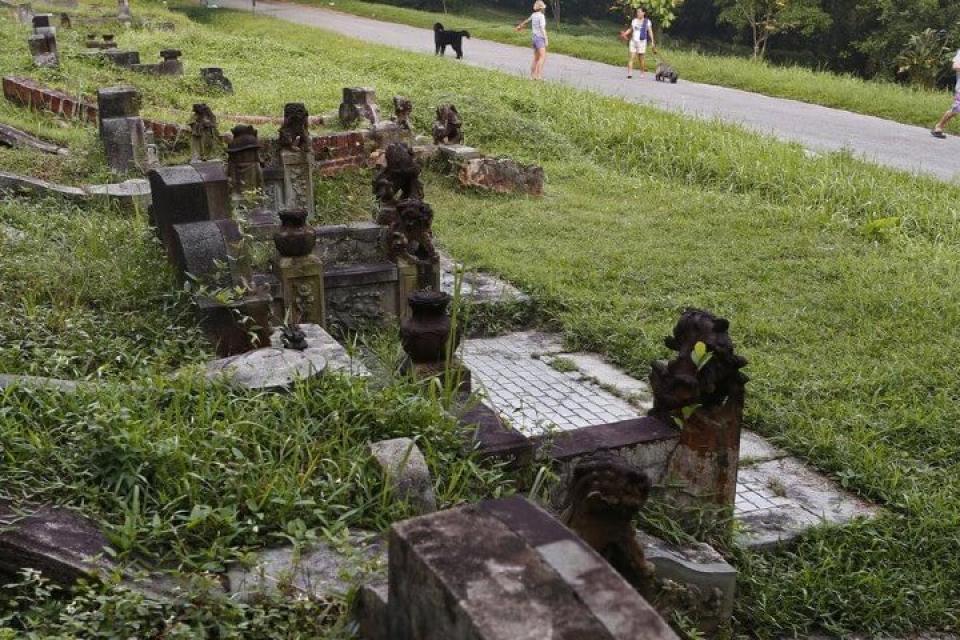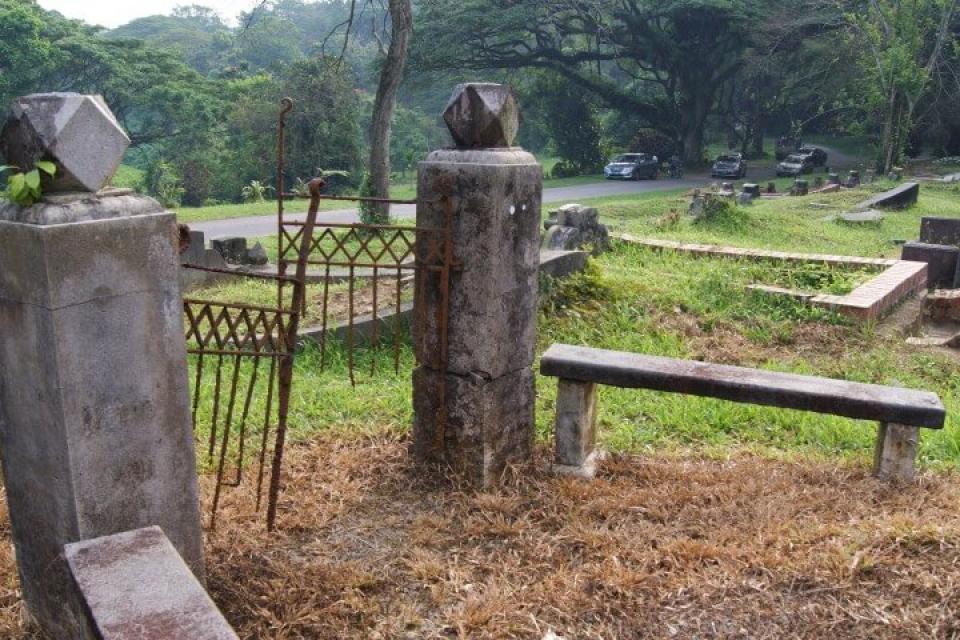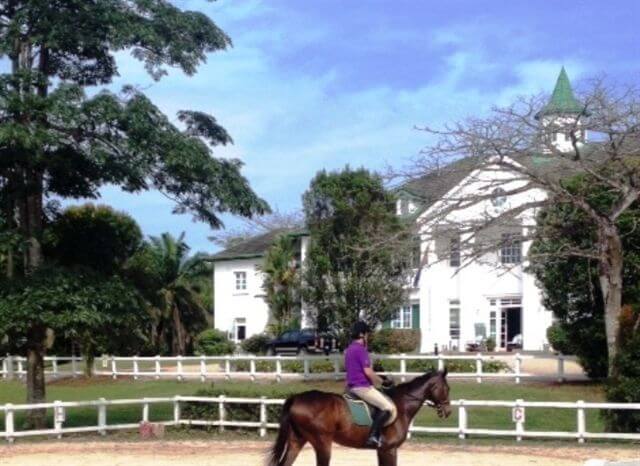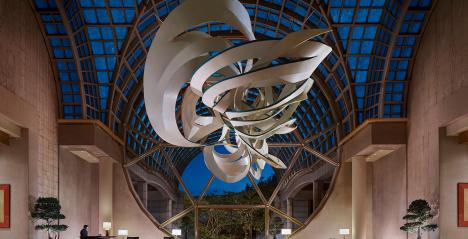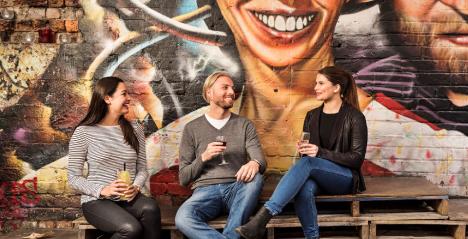Nestled deep in the forested hill of the now defunct Bukit Brown cemetery, among tombs & graves, lies a little Chinese temple named Sin Heng San Teng Temple (新恒山亭庙).
The temple got its name from the old Sin Heng San Teng cemetery that surrounds the temple. The cemetery used to be owned by the Hokkien Huay Kuan (Hokkien Clan Association). With the expansion of the Bukit Brown cemetery the Sin Heng San Teng cemetery was absorbed as part of it. It is also called the ‘Lao Sua’ (Old Hill) Temple. And the temple does indeed sit atop a hill within the cemetery.
Bukit Brown Cemetery was abandoned in 1973 by which time it has become the home for more than 100,000 tombs. Today, nature is reclaiming back the Bukit Brown Cemetery and many of these tombs have been lost to the jungle. Likewise this temple is no longer known to many except to those that grew up around the temple area and those who drop by during Ching Ming festival to pay respect to the graves of their ancestors nearby to the temple area.
The temple's history can be traced to 1893, based on the words carved on the oldest incense burner in the temple. A report by a paranormal group API did mentioned a few stele found in the temple, which recorded the year of build as 1950 and year of rebuilds as 1950 and 1969.
The original Heng San Teng temple was built in 1828 along Jalan Bukit Merah by the predecessor of Hokkien Huay Kuan, but was destroyed in a fire in 1992. A statue of Tua Pek Kong did survive the fire and is now worshipped in Kim Lan Beo temple.
The temple is pretty well concealed and not directly accessible from any road. The only way to get to it is by foot. What we found was not something you would expect to come across right in the middle of an abandoned cemetery. This was a temple that was not lost to the jungle yet. In fact, it had been lovingly maintained by a group of local people who have taken it upon themselves to keep the temple in good condition.
The latest restoration efforts were indeed commendable and started around 2012. This include replacing the roof, clearing the undergrowth, restoring the dragon painting at the back wall of the temple and making regular offerings to the temple deity Tua Pek Kong (God Of Prosperity).
Throughout Southeast Asia, Tua Pek Kong is a Chinese deity who has been believed to bring luck and prosperity to those who worship it. Devotees in Singapore often pray to the Tua Pek Kong in hopes of getting lucky number combinations to strike the lottery.
Take a walk around the temple and you may spot photographs on the wall of the temple that showed its original state before restoration work started to bring the lost temple back to life. We were lucky as on the day of our visit on Sunday, the friendly caretakers were around. One of them chatted with us.
From his stories, it sounded like they are a group of friends who spend their Sunday's at the temple working on its restoration and meeting up socially in the process. While we were there, they had started to tidy up the temple. Most of them had grew up in a nearby ‘Kampong’ (hamlet) near the temple and hence wanted to help upkeep the temple voluntarily.
In the grounds surrounding the temple are gardens planted with flowers and herbs plus a cage with a jungle fowl. It is also fascinating to see the surrounding old graves and tombs that were bit by bit being completely taken over by nature.
Do check this historical place before they are wiped out from our memories.

